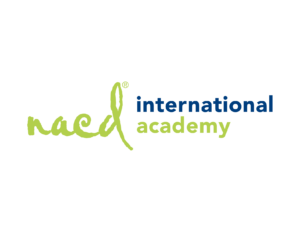About the NACD International Academy
 The NACD International Academy is a branch of the NACD international organization which serves children and adults world-wide assisting them in improving their neurological organization and global function. The Academy provides services to NACD clients by supporting and documenting each individualized academic program.
The NACD International Academy is a branch of the NACD international organization which serves children and adults world-wide assisting them in improving their neurological organization and global function. The Academy provides services to NACD clients by supporting and documenting each individualized academic program.
NACD’s educational approach is based on a deeply-rooted understanding of how the brain develops and learns. By improving neurological development as a primary goal, which includes cognitive development, NACD assists individuals in becoming better at reasoning and learning. This unique approach allows students to build their auditory and visual memories, their working memories and attention spans to increase their productivity with the educational input that they are receiving. Without strong auditory processing and a strong working memory, the student frequently does not grasp what is being taught, does not retain much of it and is not able to apply the information in other contexts. These are all functions tied to short-term memory and working memory, which can be strengthened with the appropriate targeted intervention activities.
Improving global and cognitive function as the first step in educating an individual is a unique approach particularly when it is combined with instruction and opportunities that provide input that makes sense to the student and excites them. NACD does not use packaged curriculum. The student is not fitted into the curriculum, but rather the instructional strategies and learning opportunities are designed to truly fit the individual.
What are we trying to achieve with education? What do we mean by educating a child? If we mean that we are teaching subject content, then truly traditional schools are failing as most students retain very little of what is taught beyond the most recent unit test. If we mean that we are teaching critical thinking, then again traditional schools are failing as most students graduate with very poor critical thinking skills. In fact, critical thinking is the outcome of a strong working memory and executive function. These are neurological, cognitive functions that do not improve with skill-based instruction.
 NACD combines activities designed for each individual student to improve his or her neurological function with efficient and effective instruction strategies for basic skills as well as encouraging parents, with our assistance, to develop exciting and interesting learning opportunities in the areas of Science, History, Geography, and Literature. By addressing essential factors such as the student’s intention to learn as well as the Wow factor in exploring information and experiences that are being presented, students are able to enjoy their learning experience, expand their desire to learn more and have a high retention of information. This student-centered, individualized strategy results in high retention of what is learned as well as a keen desire to learn more.
NACD combines activities designed for each individual student to improve his or her neurological function with efficient and effective instruction strategies for basic skills as well as encouraging parents, with our assistance, to develop exciting and interesting learning opportunities in the areas of Science, History, Geography, and Literature. By addressing essential factors such as the student’s intention to learn as well as the Wow factor in exploring information and experiences that are being presented, students are able to enjoy their learning experience, expand their desire to learn more and have a high retention of information. This student-centered, individualized strategy results in high retention of what is learned as well as a keen desire to learn more.
Not only is the approach supported by neurological principles, but it is also supported by educational research and theory as well. Often it is asked why educators do not apply what has been learned through research in thinking and learning. There is, in fact, a huge gulf between what is known about learning and thinking development and what is being done in schools and many homeschools today. As illogical as this may seem, educators and curriculum developers do not take what is known about how students learn, what is known about the retention and application of information and what is known about processing information and apply it to what they are developing and implementing. The results are very tragic. Students around the world are learning less, thinking in less sophisticated ways but spending thousands of hours being “educated.”
NACD is changing all of that. By applying what we know about learning and thinking, we are staying on the cutting edge of cognitive development breakthroughs. So how exactly is NACD’s approach different? What are the particulars?
NACD does not place a student in packaged curriculum but develops and designs what materials best suit that particular individual at that particular point in time.
NACD does not use a static grade level to recommend materials. Instructional strategies and materials are matched to the student’s level and ability to process information. Specific subjects may be taught at varying grade levels depending on how the student processes information and how that relates to learning various types of information.
NACD does not try to force students to achieve instructional outcomes based on a lock-step instructional model. Individual students process information and improve their working memory and executive functions at various speeds so some learning is easy and some may take longer to achieve. Instruction moves at the rate that the child can move which is sometimes very fast and sometimes at a different pace.
NACD does not lock a student into an unchanging educational plan. Methods and materials are dynamic, changing as the student changes.
NACD does not abandon the parent to try to get the student through material. NACD provides continuous support and interaction with the parents.
What Does NACD do?
The NACD staff assesses students on a tri-semester basis in all areas of neurodevelopment as well as basic academic skills.
NACD staff then develops a specific plan for that specific child and provide extensive support to parents in learning to implement these activities.
Each plan includes areas of short-term, working memory and executive function activities. It includes a specific instructional and learning plan that is appropriate to that specific child and which is fluid as the staff receive feedback from the parent regarding how the child is responding.
[space size=”40px”]
Get Started with NACD
For more information on how to get started with NACD, please visit:
[btn text=”Get Started with NACD” link=”/get-started/” tcolor=”#ffffff” bcolor=”#d35400″ bordercolor=”#e67e22″ thovercolor=”#d35400″ bhovercolor=”#ffffff” borderhovercolor=”#d35400″ border=”2px” size=”large” font=”h1-family” icon=”kt-icon-link”]
[space size=”40px”]

